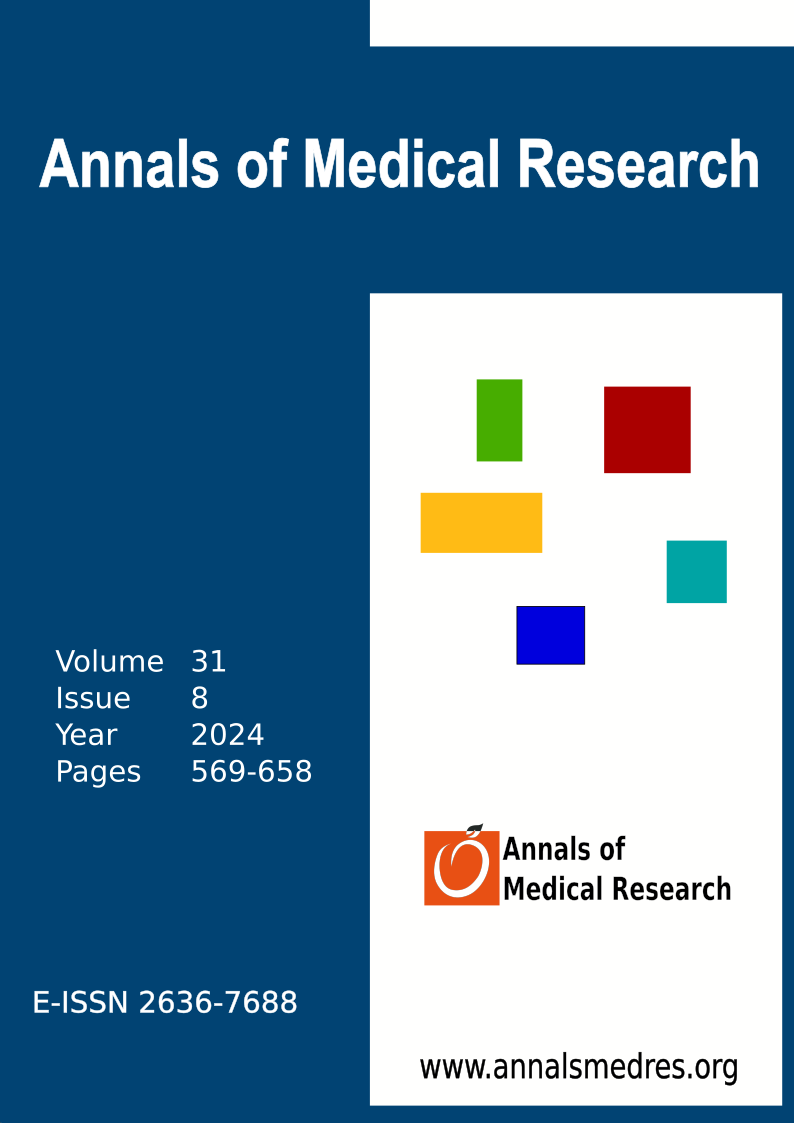Is epidural and subcutaneous fat tissue thickness associated with lumbar disc herniation?
Keywords:
Disc herniation, Subcutaneous fat, Epidural space, Magnetic resonance imagingAbstract
Aim: Lumbar disc herniations (LDH) cause important clinical symptoms such as low back pain (LBP) and have many causes. This study investigates the role of epidural and subcutaneous fat tissue thickness in LDH.
Materials and Methods: In this cross-sectional study, individuals aged 18-83 with lumbar magnetic resonance imaging (MRI) due to LBP were evaluated retrospectively between July 2023 and January 2024. According to lumbar MRI, they were divided into two groups: Those with or without herniation. Both groups measured epidural fat tissue thickness (EFTT) and subcutaneous fat tissue thickness (SFTT) at all lumbar levels. The relationship between the two groups in terms of EFTT and SFTT was examined statistically.
Results: According to lumbar MRI, herniation was detected in 292 patients, and no herniation was detected in 300 patients. SFTT was found to be greater in the group with herniation than in the group without herniation at all lumbar levels (p = 0.0001). EFTT was lower in the group with herniation at all levels (p = 0.0001). In the group with herniation, there was a statistically significant correlation between the number of hernia levels and SFTT (r: 0.54, p: 0.0001) and EFTT negatively (r: -0.22, p: 0.0001).
Conclusion: An increase in SFTT thickness and a decrease in EFTT are associated with disc herniation. This relationship is a result of the mechanical and inflammatory damage caused by obesity. In addition, the relationship between herniation and the decrease in EFTT demonstrates the protective function of epidural fat tissue.
Downloads
Published
Issue
Section
License
Copyright (c) 2024 The author(s)

This work is licensed under a Creative Commons Attribution-NonCommercial-NoDerivatives 4.0 International License.
CC Attribution-NonCommercial-NoDerivatives 4.0






